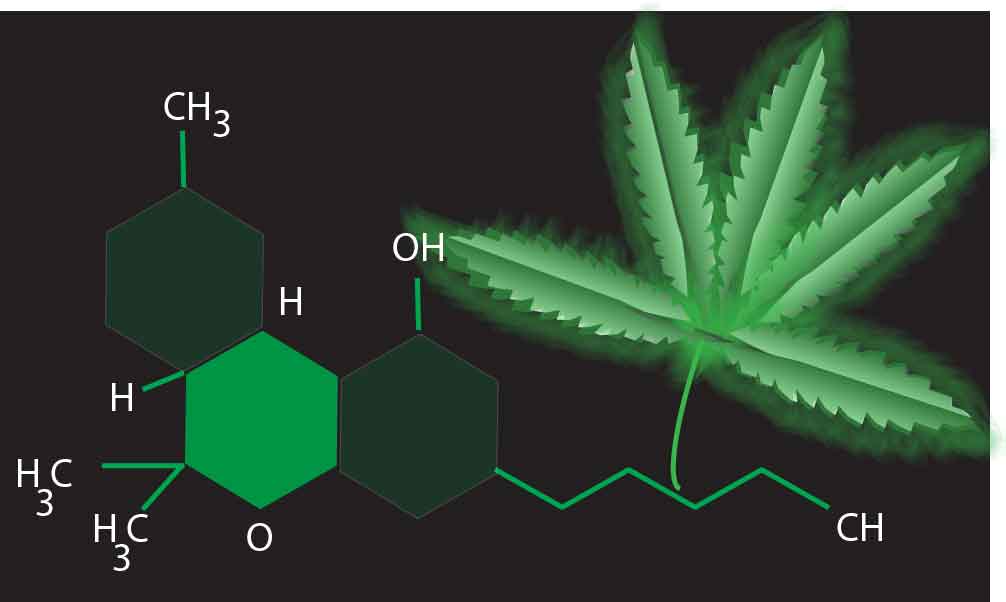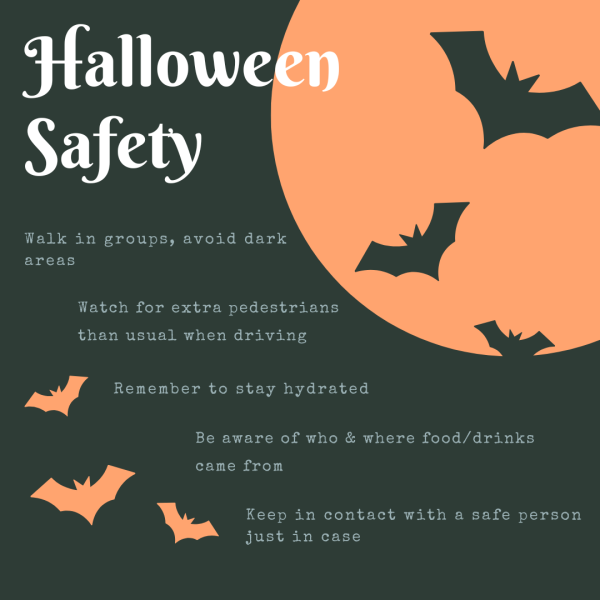What you need to know before using marijuana
Graphic by Bailey Horlander.
A continuing debate involves the legalization of cannabis – more commonly referred to as weed, pot or marijuana. Some say it’s a gateway drug to harder drugs such as cocaine or heroin. Others say that the benefits outweigh any downsides. As the debate continues, it’s important to know the facts.
I have very little experience with marijuana use. In order to be informed, I thought it was best to learn as much as I could and share it with my fellow students.
According to drugabuse.com, marijuana is a mix of the “cannabis sativa” plant and dried leaves. It can be smoked in a variety of ways.
It can be rolled in cigarette paper which is referred to as a “joint” or in cigar wrappers, which are sometimes called “blunts.” It can be put into a pipe (generally a piece of glass that has a small, bowl-shaped end and a tube to breathe it in); these pipes can be big or small and can also have water in them, which is referred to as a bong. It can also be cooked into foods called edibles.
The thing that gives people that high feeling is a chemical called “delta-9-tetrahydrocannabinol” or THC – a resin that comes from the cannabis and the leaves.
The actual effect of marijuana varies by person. The most common experience is one of euphoria or relaxation; however, some experience fear, anxiety or distrust. Other common feelings are those of hunger, heightened senses and increased laughter.
According to a 2015 study, over 22.2 million people reported using marijuana in the month leading up to the study. Researchers have found that marijuana is used by those as young as eighth grade students. The same research showed that as students progressed to 10th and then 12th grade, the more they reported using marijuana.
This is troubling. Students at such a young age are becoming involved with a drug that can impact their quality of life forever. They are anywhere from 14 to 18 years old. Their brains aren’t even finished developing enough to make these decisions.
However, some marijuana uses are helpful to people.
Marijuana is used for several medical purposes. It aids in managing glaucoma, headaches, cramps, nausea from chemotherapy, seizures and many other severe medical conditions.
In 2011, the Drug Abuse Warning Network reported that nationwide there were nearly 456,000 drug-related medical emergencies. However, the report couldn’t assume how much of a cause was due to marijuana use.
Recent studies have shown that marijuana use is linked to impaired driving ability. This is due to the impairment to reflexes, judgment and overall coordination of the users.
While most marijuana users say you can’t get addicted, this is not true. It doesn’t happen to everyone, but it’s estimated that as much as 30 percent of those who use have some degree of a condition called Marijuana Use Disorder.
This disorder involves a dependence on marijuana, not necessarily an addiction. Symptoms of this disorder are evident when the person isn’t using marijuana, including irritability, mood changes, sleep changes and appetite changes.
Addiction comes when users can no longer perform their day-to-day routine without marijuana. When the use is discontinued, users go through withdrawal for up to two weeks and experience the symptoms listed above as well as physical discomfort.
Marijuana use has been linked to poorer academic functioning, less interest in education and a higher dropout rate. However, the debate over these issues is still highly contested. Some research suggests that marijuana use can cause actual physical changes to the brain structure. Other research disputes these findings. However, prolonged and excessive use of marijuana can cause the receptors in the brain to produce less of its own neurotransmitters because it becomes dependent on those from the drug.
Kansas is one of five states (those other states being Idaho, West Virginia, Indiana and South Dakota) to have cannabis possession fully illegal. Many states have either passed it into legal use or “decriminalized” it.
The research into this area has found a lot of truly fascinating trends. However, it has raised more questions than it has answered. Much of the research seems to contradict itself, which doesn’t help settle this debate.
The simple answer to the legalization question is that there needs to be more research to determine actual concrete evidence of the side effects and benefits before anyone should really hold a stance.
Many of the currently held views are those that aren’t backed up by the data. For example, saying it’s not addictive isn’t the reality of the situation. Saying it can only hurt your brain isn’t reality either. Marijuana can do both, and until there’s more real evidence of either side, the jury is still out on the legalization argument.







